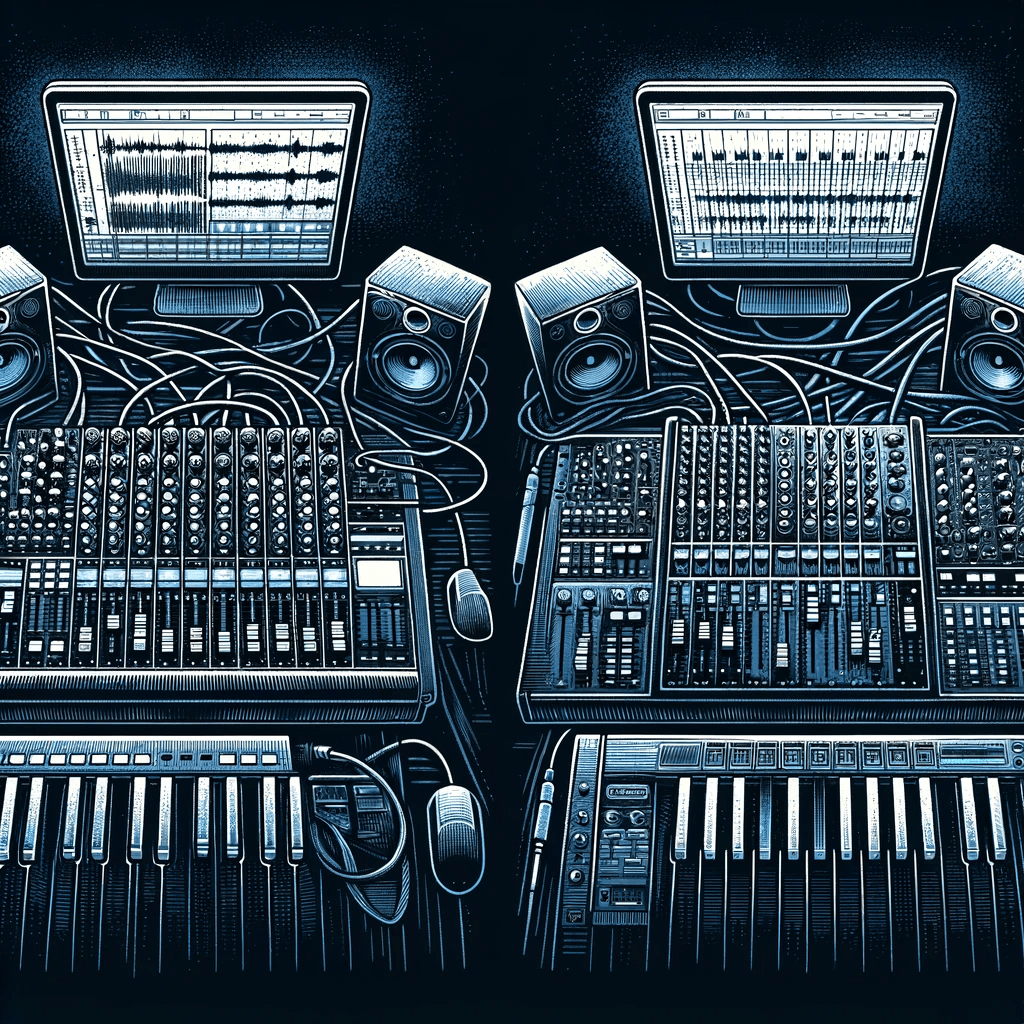Introduction to Granular Sampling
Granular sampling represents a cutting-edge technique in modern sound design, a process that has significantly transformed the landscape of music production. This method involves dissecting sound into tiny fragments, known as 'grains,' and manipulating these fragments to create entirely new sonic textures. The concept, stemming from granular synthesis, extends its principles to sampled sounds. Even if you are working on something as basic as turning a loop into a full song, this offers producers a vast array of creative possibilities.
The Genesis of Granular Sampling Techniques
Historical Perspective
The concept of granular synthesis and sampling dates back to the 1940s and 1950s, with pioneers like Iannis Xenakis and Curtis Roads contributing to its theoretical framework. However, it wasn’t until the advent of digital audio technology that granular techniques became practically feasible for music producers.
The Evolution into the Digital Era
With the digital revolution, granular sampling has evolved, becoming more accessible and versatile. Software and hardware now enable producers to manipulate sound grains with precision, offering a level of control that was unimaginable in the early days.
The Science Behind Granular Sampling
Understanding Sound Grains
A sound grain is a tiny slice of audio, typically ranging from 1 to 100 milliseconds. These grains are the building blocks in granular sampling. By altering their characteristics - such as pitch, volume, duration, and spatial position - producers can weave complex audio tapestries.
The Process of Granular Sampling
- Extraction: Selecting a segment of audio to be granulated.
- Slicing: Dividing the segment into numerous small grains.
- Manipulation: Independently altering the properties of each grain.
- Reassembly: Combining the processed grains to form a new sound.
Applications in Music Production with Granular Sampling
Creating Textural Landscapes
Granular sampling excels in crafting evolving soundscapes and atmospheres. By manipulating grains, you can generate sounds that continuously evolve, perfect for ambient music, cinematic scores, and experimental genres.
Transforming Rhythmic Elements
It can also radically transform rhythmic elements. By granulating drum loops or percussion samples, producers can create complex, stuttering rhythms that are both intriguing and rhythmically diverse.
Vocal Processing
Granular techniques provide a unique approach to vocal processing. From ethereal, angelic choirs to glitchy, robotic effects, the possibilities are endless.
Granular Sampling in Practice
Selecting Source Material
The choice of source material is crucial. While any sound can be granulated, complex, evolving sounds often yield the most interesting results. Field recordings, vocal samples, and synthesized pads are excellent starting points.
Software Tools
Several software tools specialize in granular sampling, such as Ableton Live's Granulator II, Steinberg's Padshop, and Native Instruments’ Form. Each offers unique features and workflows.
Creative Techniques
- Time-Stretching and Pitch-Shifting: Stretch grains to extreme lengths or shift their pitch for dramatic effects.
- Randomization: Randomly alter grain parameters to create unpredictable textures.
- Modulation: Apply LFOs or envelopes to modulate grain parameters dynamically.
Granular Sampling: Challenges and Solutions
CPU Load
Granular sampling can be CPU-intensive. To mitigate this, optimize grain density and use efficient software.
Balancing Complexity
While granular sampling allows for immense complexity, it’s essential to balance this with the musical context. Sometimes, less is more.
Integrating with Other Elements
Ensuring granular textures blend well with other musical elements can be challenging. Use EQ and dynamics processing to carve out space in the mix.
The Artistic Implications of Granular Sampling
Granular sampling isn't just a technical process; it's a form of artistic expression. For example, let's say you are working on creating a techno drum loop. Granular sampling allows producers to deconstruct and reconstruct sound, blurring the lines between synthesis and sampling, noise and music, reality and abstraction.
Final Words on Granular Sampling
Granular sampling is a gateway into a world of unparalleled sonic exploration. By understanding its principles and creatively applying its techniques, you can transform mundane sounds into mesmerizing auditory experiences. Embrace this powerful tool, and let it inspire your musical journey.






Comments